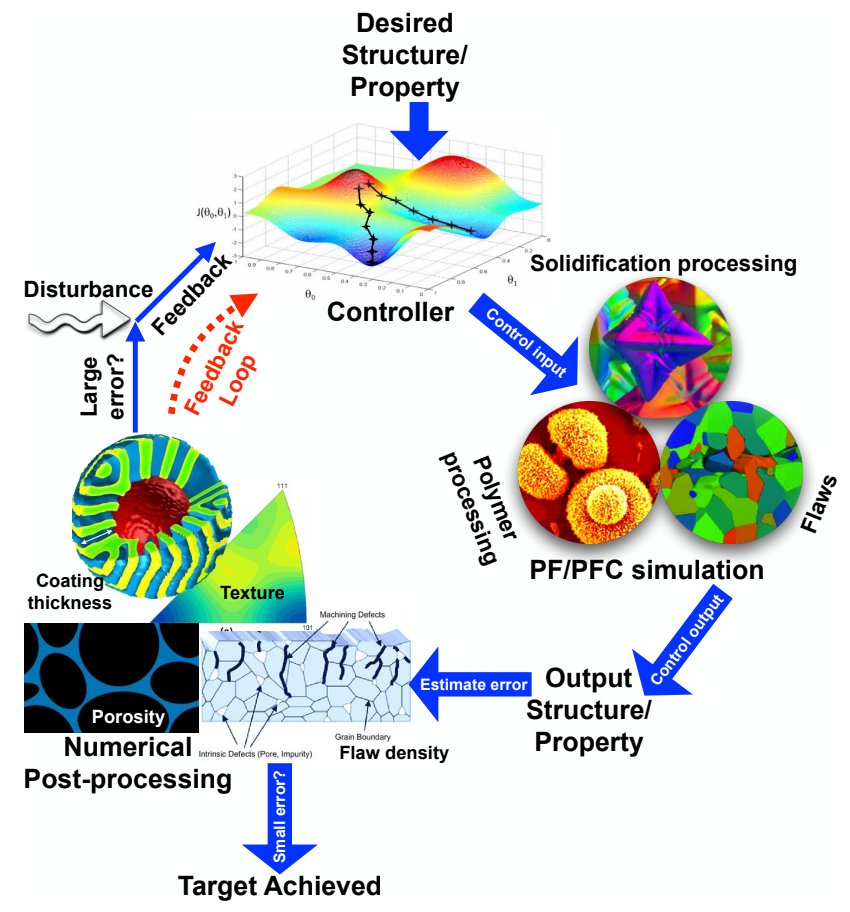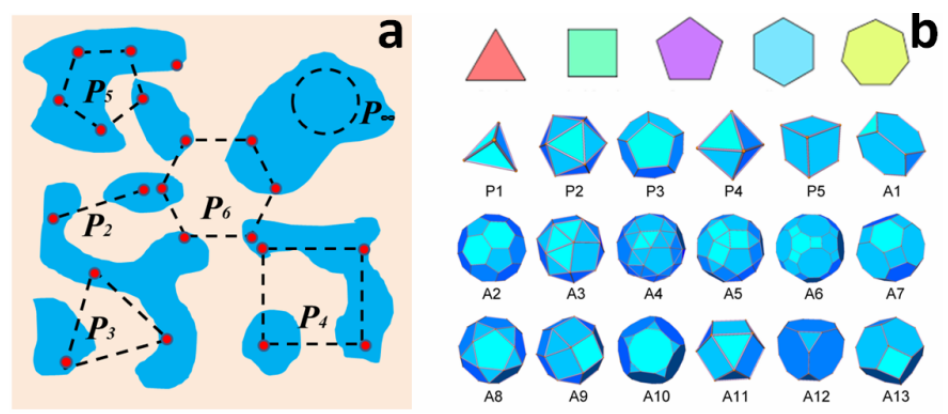Potential Project Topics
The following are potential topics you can pick or develop from. I will keep updating this list.
Topic 1. Optimal control of mirostructure evolution

This project explores answers to the following key questions: How does one optimally control processing parameters to tailor advanced materials? And what are the minimal requirements for processing that facilitates the synthesis of a material with specific properties and behavior? The research within this project will address these questions by coupling phase-field method with optimal control theories for determining optimal materials processing trajectories.
This project is a collaboration with Dr. Ankit Kumar.
Key words: Optimal control, Reinforcement learning
Topic 2. Learning material representations for reconstruction and prediction

Effective and accurate characterization and quantification of complex microstructure of a heterogeneous material and its evolution under external stimuli are very challenging, yet crucial to achieving reliable material performance prediction, processing optimization and advanced material design. To address this challenge, hierarchical statistical microstructural descriptors have been developed as potential representations to facilitate data-driven material reconstruction and prediction. However, there lacks a systematic way for identifying the key descriptors from the infinite many choices (see figure for example).
This project is a collaboration with Dr. Yang Jiao.
Keywords: Material design, Machine learning
Topic 3. Soft gripper defect design
Switchable adhesive materials have been developed as soft grippers for lifting flat surfaces (such as microchips, glasses, solar panels, and other products) of significantly larger dimensions with high energy efficiency, and have potential in lowering manufacturing costs.
Importantly, the magnitude of the adhesive force (i.e., the maximal pulling force) is tunable via external stimuli. For example, when a voltage is applied, the percolating conductive propylene-based elastomer (cPBE) phase carrying a current becomes softened due to joule heating, which leads to re-distribution of stress concentration on the contact surface and thus, a decreased maximal pulling force. An ideal gripper should possess a large pulling force without the stimuli (to be able to pull up heavy objects) and a small pulling force with the stimuli (to be able to drop light objects).
These pulling forces are influenced by both the material properties and defect patterns on the interface. This project investigates the topological design of the interface defects that governs the propagation of cracks under pulling, thus achieving high maximal pulling force. Please see initial model development here and the code repo here.
This project is a collaboration with Dr. Wanliang Shan (Syracuse University)
Keywords: Design sensitivity analysis
Topic 4. Social grace in self-driving

Self-driving cars are conservative in the way they drive. However, it is not clear whether their conservative behaviors are always seen as socially graceful. Let’s look at a specific counter-example: When being the leading car waiting for a left turn, the self-driving car may not understand the tacit rule that it should move itself forward a bit so that cars behind it can have a better chance to get through during their turn. Further, the self-driving car will not understand why cars behind it would honk when it does not move forward.
This project seeks answers to the following questions:
-
What is the formalism of motion planning to reproduce human-like behavior (moving forward a little bit in this case) when the self-driving car understands the intent of the car behind it?
-
What is the formalism of learning to enable recognition of others’ intents when the self-driving car receives a honk?
This project is collaboration with Dr. Yezhou Yang and Dr. Wenlong Zhang.
Related papers:
-
Sadigh et al. “Planning for Autonomous Cars that Leverage Effects on Human Actions”
-
Englert et al. “Inverse KKT: Learning cost functions of manipulation tasks from demonstrations”
Keywords: Game theory, Optimal control
Topic 5. Share ride
Consider a city as a graph with finite number of nodes and edges. Each request is represented by two different nodes for which a path between the two exists, one for pickup and the other for destination. Let a finite number of cars be at a subset of nodes. What is the best routing strategy to minimize the overall distance to cover by these cars while meeting all requests?
- Related papers: Alonso-Mora et al. “On-demand high-capacity ride-sharing via dynamic trip-vehicle assignment”.
Topic 6. Race track optimization
Please see this previous project report, and propose to improve (1) the modeling, (2) the problem formulation, (3) or the optimization algorithm based on the report.
Topic 7. Energy-efficient powertrain control through traffic jams
Design a hybrid powertrain and its control strategy to improve the energy efficiency for heavy trucks in traffic jams. See previous project reports for models of hybrid powertrain.
–> –> –> –> –> –> –>